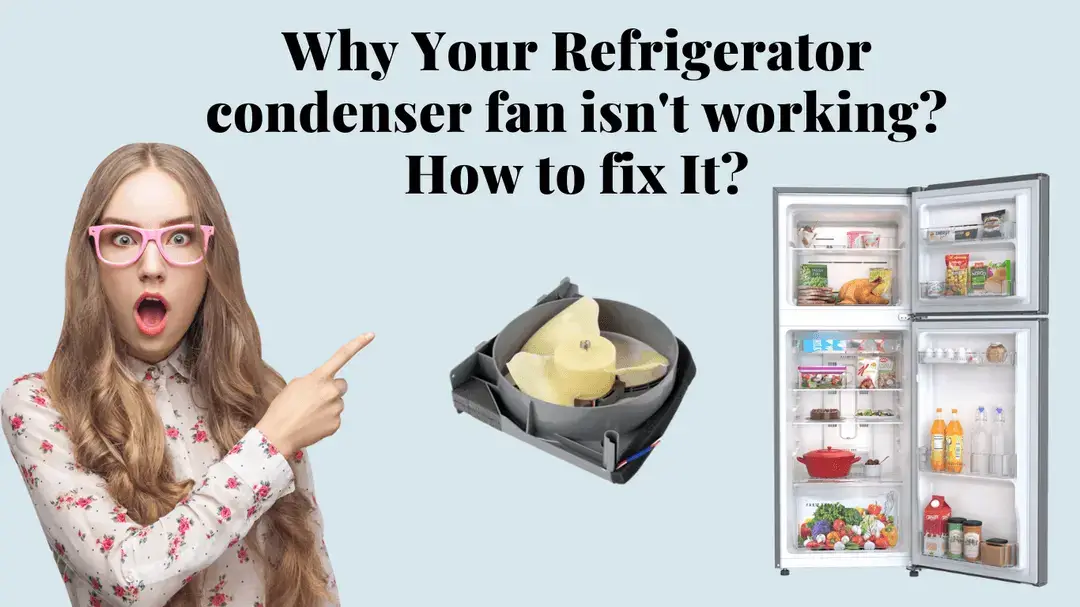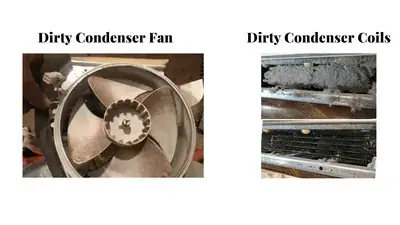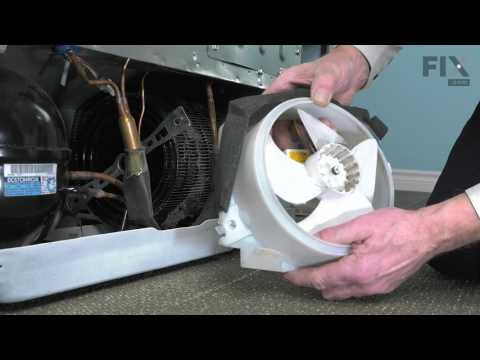Refrigerators are one of the most important appliances in our homes, keeping our food fresh and our drinks cold. But unfortunately, when the refrigerator condenser fan fails, the consequences can be severe.
When the condenser fan stops working, you might notice a few things happening: first, your fridge will start making strange noises as the compressor struggles to keep up with its workload. Secondly, you might notice that your food isn’t staying as cold as it should be – this is because without proper airflow from the fan, heat can get trapped inside and cause temperatures to rise.
Table Of Contents
- How to Check for Broken Refrigerator Condenser Fan?
- How Does a Refrigerator Condenser Fan Work?
- Why Isn’t the Refrigerator Condenser Fan Working?
- What Are the Signs of a Faulty Condenser Fan?
- How to Fix or Replace a Faulty Condenser Fan?
- Preventing Refrigerator Condenser Fan Issues
- To Finish With
- Frequently Asked Questions

How to Check for Broken Refrigerator Condenser Fan?
There are some obvious signs that can help you decide if it’s time to replace your condenser fan. Here are some important things to keep in mind when figuring out whether your refrigerator condenser fan needs to be fixed.
One of the key components of a fridge is the condenser fan, which plays a critical role in maintaining the refrigerator cool. The refrigerator condenser fan may stop working for various reasons, such as a dirty fan blade or a faulty motor. Cleaning the fan blades and ensuring the motor is receiving power are two simple steps you can take to fix the issue.
How Does a Refrigerator Condenser Fan Work?
Before we understand why your condenser fan might not work, it’s important to know how it works. The condenser fan is located at the back of your refrigerator and is responsible for removing the heat from the refrigerator’s condenser coils. As the refrigerant flows through the condenser coils, it releases heat, which is transferred to the fan. The fan then blows the hot air out of the refrigerator, keeping the temperature inside cool.
Why Isn’t the Refrigerator Condenser Fan Working?

There are several reasons why your condenser fan might not be working, including the following:
- A broken fan blade: Over time, the fan blade can become damaged or break, which can cause it to stop spinning.
- A faulty motor: If the motor that powers the condenser fan is defective, the fan won’t be able to spin.
- Dirty or clogged fan: Dirt, dust, and debris can accumulate on the fan blades, causing them to become clogged and stop spinning.
- Electrical Problems: The electrical connections in the condenser fan can become loose or corroded over time, leading to failure.
- Obstruction: The fan blades can become obstructed by ice or debris, preventing them from turning.
- Faulty relay switch: The relay switch controls the power to the condenser fan. If the switch is defective, the fan won’t receive power.
- Age: Over time, the motor and other components of the condenser fan can wear out, leading to a loss of function.
What Are the Signs of a Faulty Condenser Fan?
Here are some signs of a faulty condenser fan you should look out for.
- Running constantly: Your refrigerator will have to work harder to keep the temperature inside cool, which can cause it to run constantly.
- Loud or unusual noises: If you hear strange noises from your outdoor unit, such as grinding or squealing, it may indicate a problem with the condenser fan.
- Slow or no movement: If the fan is not turning at all or is slower than normal, it may be a sign of a faulty motor, which can cause the fan to stop working.
- Hot air blowing: If the condenser fan is not working properly, it can cause the air conditioner to blow hot air instead of cold air. This is because the heat from the system is not being properly removed.
- Higher energy bills: A faulty condenser fan can cause the air conditioning system to work harder than it needs to, leading to increased energy bills.
- Tripped circuit breaker: If the condenser fan is drawing too much power, it can trip the circuit breaker, causing the system to shut down completely.
How to Fix or Replace a Faulty Condenser Fan?
The condenser fan is an important component of an air conditioning system that helps remove heat from the system. If you’ve determined that your condenser fan isn’t working, here are the steps you can take to fix it:
- Repairing Electrical Connections: If the problem is with the electrical connections, they must be repaired or replaced.
- Clean the fan blades and condenser coil: Before trying anything else, clean the fan blades and condenser coil. Dust and debris can prevent the fan from spinning and reduce airflow, causing your refrigerator to overheat.
- Removing Obstructions: If the fan blades are obstructed, they must be cleared of ice or debris.
- Check the wiring and motor capacitor: Ensure all wiring is secure and not loose. If the capacitor is damaged, it can be replaced with a new one.
Replacing a Faulty Condenser Fan
If the solutions mentioned above don’t work, you may need to replace the Condenser fan. If you’re good at using tools and have some experience fixing things around the house, replacing the faulty Condenser fan might be a simple task.
- Turn off power to the refrigerator: Unplug the refrigerator or turn off the circuit breaker that powers it before beginning any repairs.
- Locate the condenser fan: The fan is typically located near the bottom at the back of the refrigerator.
- Remove the old fan: First, remove any screws or clips holding the old fan in place. Carefully disconnect the wires that are attached to the fan motor. Then, gently pull the old fan out of its housing.
- Install the new fan: Place the new fan in the same position as the old one. Reattach any screws or clips that hold the fan in place. Connect the wires to the new fan motor and correctly match the wire colours.
- Test the new fan: After installing the new fan, turn the power back on to the refrigerator and listen for the sound of the new fan running. Check that the blades are turning smoothly and that there are no strange noises.
- Replace any covers or panels: If you have to remove any covers or panels to access the condenser fan, replace them before reusing the refrigerator.
Safety Note: It is important to follow proper safety procedures when working with refrigeration systems, such as wearing protective gear and following manufacturer instructions. If you need clarification on any repair aspect, it is best to contact a qualified technician.
Preventing Refrigerator Condenser Fan Issues
To prevent future condenser fan issues, make sure to:
- Regularly clean the fan blades and condenser coil to avoid blockages.
- Keep the refrigerator away from walls and other appliances for proper airflow.
- Schedule regular maintenance checks with a professional technician to ensure all components function correctly.
To Finish With
In conclusion, a refrigerator condenser fan failing is a serious problem. It can cause your fridge to overheat and eventually stop working altogether. It is important to know the signs of when the fan has failed and what the best course of action is to repair it. If you follow these steps and take preventive measures, you should have your fridge humming along in no time! If you’re still having trouble, it might be time to call a professional technician for help.
